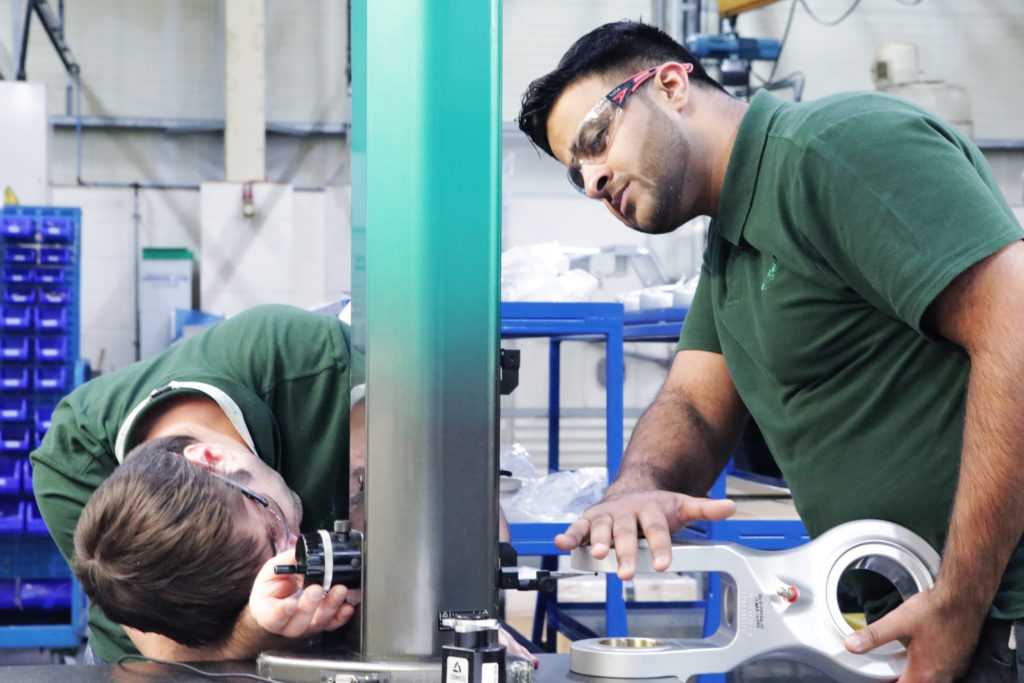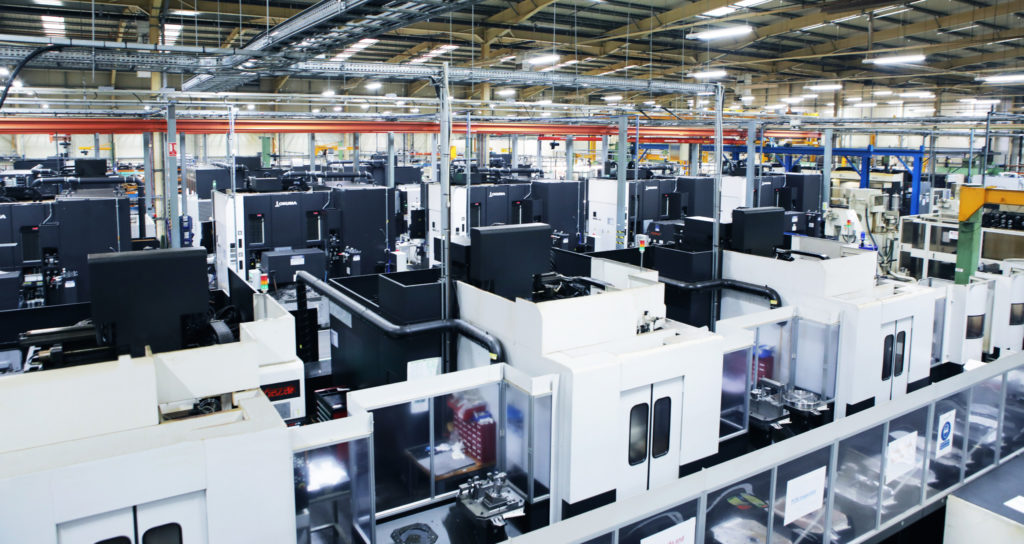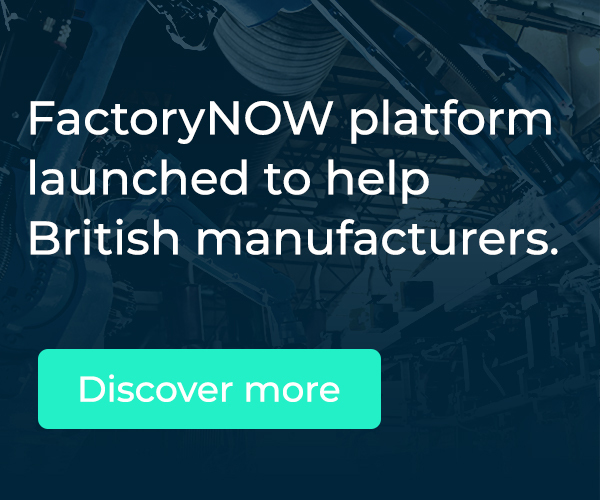How Strategy Alignment with Aerospace OEMs Reaps Rewards
15 Minute Read
As a strategic Tier 1 partner supporting many of the world’s most recognised aerospace manufacturers, Bromford Industries is one of the UK’s most technically advanced and prominent names in the supply chain. Whilst the roots of the company date back to 1975, the name Bromford Industries has only risen to prominence in the last decade. This is largely credited to mergers, acquisitions and a forward thinking and aggressive investment strategy. MTD Magazine travelled to the Bromford Group Headquarters in Birmingham to speak with Alan Dunbar, the Group Vice President of Business Development to understand the drivers behind the company’s rise to prominence and the strategic alignment with OEMs.
For those less familiar with the Bromford Group, the company was acquired by Liberty Hall Capital Partners in March 2016. The private equity company has a remit to invest in businesses serving the global aerospace and defence sectors. Globally, the business has 17 companies under its umbrella. Under this umbrella, the Bromford Group has three UK sites in Birmingham, Alcester and Leicester with Liberty Hall adding AeroCision to the Bromford portfolio in April 2018. With manufacturing sites in Connecticut US and Bangalore India, the integration of AeroCision is part of a global aerospace alignment strategy that is increasingly favoured by the leading OEMs.
Primarily focused upon industrial gas turbine, aero engine and landing gear components and systems, the prestige of the company is evident in its client list that includes Rolls-Royce, Siemens, GE, PattonAir, Alstom, MTU, ITP Aero, Pratt & Whitney, Safran Aircraft Engines and Safran Landing Systems. The reputation is backed by a comprehensive list of quality, NADCAP and customer approvals and awards.
UK Investment Program
Since 2012, Bromford has invested over £12m in new equipment at its Birmingham site and this includes 9 of only 14 Okuma large capacity 5-axis MU-6300VL VMCs in Europe. Other prominent investments include an Okuma Multus, a DMG DMC100, a Mazak FMS cell incorporating three 630-5X machining centres, two Hexagon Global CMMs and the latest arrival, a large capacity Mazak MegaTurn. This level of investment doesn’t include additive manufacturing, 5-axis laser welding and Industry 4.0 strategies that are being implemented at both Birmingham and Alcester sites.
The Birmingham facility is separated into three primary machining cells. The cells accommodate the individual programs, the LEAP engine program and Landing Gear among them. With all contracts expected to deliver long term and sustainable growth, the imminent future will see the Birmingham facility configure its nine Okuma MU-6300VL machines with a fully integrated FMS system. In addition, the Mazak MegaTurn is the first of many planned for a long-term contract – there will be much more to come. The Mazak MegaTurn cell to be installed through 2019 will support the production of a large number of different aero engine parts.

The immediate strategy
As the man responsible for identifying opportunities and winning business from global aerospace OEM’s, Mr Alan Dunbar, the Group Vice President of Business Development has his eyes firmly fixed on the future: “Our biggest individual program is the CFM LEAP, one of the world’s largest commercial jet engine programs, installed on the Airbus A320 NEO and the Boeing 737NG. This program will take a ramp-up from today’s volumes to double that in 2020. This is high-volume production of close tolerance critical components. Managing that ramp-up, the investment strategy and the integration of new machine tools is a major challenge. The project is high volume, with Bromford having secured a significant market share. So, depending upon performance, there is potential for us to secure an even greater market share, meaning Bromford are firmly committed to excellence in performance in support of flagship programs.
Commenting upon the performance criteria to be achieved, Mr Dunbar continues: “The criteria parameters we have to hit are 100% quality and in excess of 95% on-time delivery. Managing those volumes and maintaining those metrics is a huge manufacturing and logistical challenge as we have some subcontract operations involved. So, in terms of raw material supply and special processes and treatments that must be applied to critical parts, there are a lot of balls to juggle and the tolerances and repeatability required in our process has to be class leading”.
Supply Chain Structure
With specialist forgings supplied from the USA, Mr Dunbar states: “We constantly face supply chain challenges in terms of stability. We have to vary and manipulate our manufacturing output to support the customer engine program because it’s not a ‘flat-line’ production schedule. Weekly quantities will depend on the engine build and part status. For example, OEM sourcing strategy often dictates a split between Western and South East Asian sources – depending upon their outputs, customer requirements often present challenges to our operations teams.”
Rising to the challenge
When quizzed on how the Bromford Group meets the challenges of the global aerospace sector, Mr Dunbar continues: “Obviously, there has been heavy investment in technology. Furthermore, we have a very highly skilled and highly trained workforce and we are network enabled, so our efficiency is driven by real-time monitoring of everything that is going on within our production cells. Previously, we would rely on ‘old-fashioned’ KPIs and metrics, now we deal in raw data. The machine tells us what it is doing at any given time. This helps us to drive real efficiency and performance improvement based on real-time data.”
Industry 4.0
Bromford is already utilising Industry 4.0 connectivity to manage workflows on its Okuma cell and moving forward, this technology will be applied to the company’s new Mazak cell. As Mr Dunbar emphasises: “Connectivity is central to the largest program we have; but we have recently won a very large package of work with a major OEM engine manufacturer. As part of that program, we have a commitment to invest in the same Industry 4.0 technology. The work is across several different engine programs which sit in a different area to existing work. The existing work is for narrow-body aircraft whilst our new customer sits in the wide-body arena, this makes volumes lower but with more diverse workloads and challenges. As a core manufacturing strategy, we are committed to digitisation, becoming fully network enabled and utilising the concept of Industry 4.0. The benefits we see from that are real, tangible and relevant to our business today.”
“There is no ‘leap of faith’, we’ve bought into it and we already know it works. As we progress with new customers, they have strategic requirements from their supply chain. One aspect is to have a low-cost country manufacturing facility, which we do in India. The other factor is to be truly competitive from a cost perspective – this is a drive toward automation and lights-out running. That is the OEMs baseline strategy for the supply chain and that dovetails into the new innovations that Industry 4.0 brings.”

Additive Manufacturing
As the aero engine platform business for Liberty Hall, Bromford is relatively well insulated from the technology advancements of composite materials that are more prevalent among aero-structures, but looking at other disruptive market forces, Bromford certainly has a keen eye on additive manufacturing. As Mr Dunbar states: “Looking at Bromford and the biggest threats from destructive technologies, this is most likely additive manufacturing. I don’t personally see it as destructive; I see it as a constructive technology. We currently have additive manufacturing within the Group. Whilst currently restricted to non-metallic, we do make CMM component fixturing, rapid prototype fixtures and tooling. This has allowed us to bring our manufacturing lead times down from 40+ weeks to 12 weeks in some instances.”
One particular customer has asked us to make a new complex and expensive part; We have taken their drawing and models and used additive to supply a prototype of the part to demonstrate the complexity of the part we are being asked to make. The response we get is very positive. To most buyers, it’s just a drawing, but having a part produced provides an understanding of where the manufacturing cost lies in a component. It may help us to win business, but more importantly, it gives the buyer an understanding of what they are purchasing and what our capabilities are.
Metal printing isn’t with us yet, but it is part of our technology roadmap. I see 3D printing as complementary, but not central to operations as I do not yet envisage rotating parts being printed and going straight into a jet engine. It may eventually happen, but there are a lot of bridges to cross before we reach that stage. Where I do see the entry point is printing a pre-form shape and finish machining to generate less waste, reduced machining times and reduced costs. The key challenge for 3D printing is structural integrity with regard to engine components.
The Technology Roadmap
As a 350+ employee business operating on three continents in more than 230,000sq/ft of factory space, the Bromford Group has developed a ‘technology roadmap’ for the future of the business. Alluding to this, Mr Dunbar says: “Here and in Connecticut, we are focused on high volume engine component production and our roadmap for this is purely based around network-enabled equipment, automation and lights-out running. If we look at Bromford Technologies down in Alcester, they have a different customer base and there our roadmap is somewhat different. It is partially based on automation, new equipment like 5-axis lasers and some of it is in the new constructive/destructive technologies like additive manufacturing. They operate in the industrial gas turbine market and can bring parts to market quicker with these developments.”
Working with the OEMs
As a Tier 1 strategic supplier, Bromford certainly recognises the ongoing cost pressures, as Mr Dunbar alludes: “Most of the contracts we have include clauses that are year-on-year ‘cost-down’. Whether that is committed in a number or as a collaborative target to achieve cost benefits, we have to reduce costs. To do this requires investment in technology, continuous improvement and excellence in processes.”
Supply chain concerns – and the future…
Since the Liberty Hall takeover, there has been a real paradigm shift at the company in terms of its ability and agility to invest in its customer base. Our key message to the market isn’t just our ability to manufacture on-time with a good product and competitive price; it’s our ability to invest in the customer. If you look around the market at present, especially narrow body single aisle aircraft, it’s only going one way. There is world growth that will continue for several years and the opportunity for top performing suppliers has never been better.
The supply chain is certainly a concern regarding volumes. Globally all of the engine manufacturers (Safran, GE, Pratt & Whitney and Rolls-Royce) are all vying for capacity. I don’t think any one supplier can service all of those guys and certainly not in the volumes they require. If you look at a 50/50 market split between the two main engine programs for narrow body aircraft and the fact that we will be making in excess of 3,500 parts from our market share of just one engine platform; it tells you that there are opportunities out there to do a similar quantity for the other engine platform OEM’s.
You can then look at the wide body aircraft with Rolls-Royce and GE sitting either side of the fence, both vying for that dominant market share. They have multiple engine programs with multiple opportunities. This leaves a huge demand on capacity and if you don’t invest to floor the right technology in the right geographical areas, then you’ll be scrambling around for low volume legacy work from existing programs. The new high-volume programs are all subject to the same sourcing strategy. That is technology, capacity and low-cost country manufacturing. We are striving to be the UK’s premiere rings and casing manufacturer through our strategy which is aligned with the strategic goals of our customers.
Press Kit
Contact












